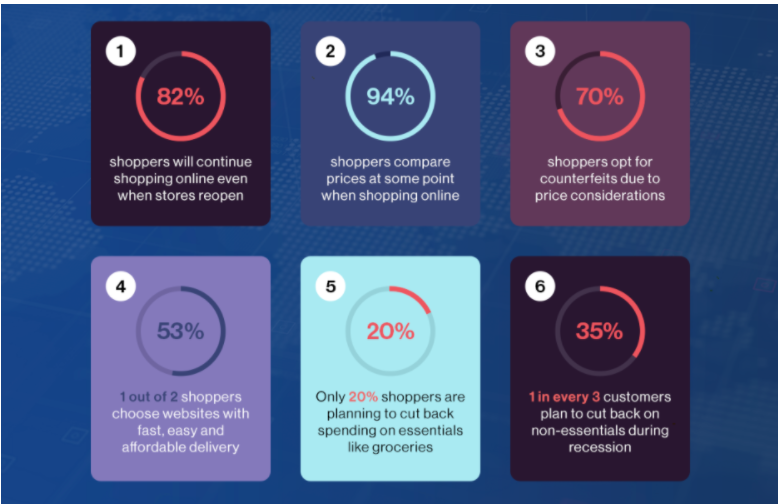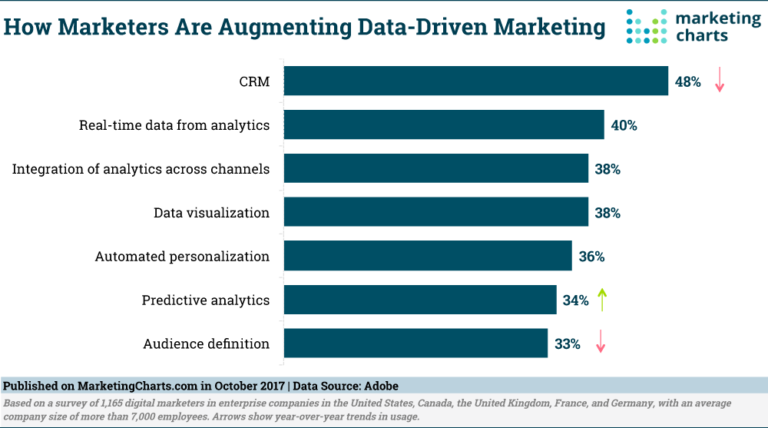If I asked you, what is that one thing that is crucial for a business’ survival, what would your answer be? Many of you would probably say its revenue. I wouldn’t say it's not, revenue is definitely important. However, it's the means to the revenue that is even more important. And that means is the consumer.
Whatever a business is or is trying to be revolves around its consumer base. And whatever those consumers feel is how the business has to adapt. There is no going around it. And when I say that ‘how the consumers feel,’ I mean their behaviour.
When a consumer buys a product or service, there is a lot of thought that goes into that decision. These thoughts start from choosing the right product to using it adequately and finally disposing it off. These three aspects of a product’s life mandate emotional, mental and behavioural responses from the consumer and that is what encompasses consumer behaviour.
There are a lot of ways to recognise and interpret consumer behaviour, however, when there are actual facts and figures backing that recognition, the work becomes easier. And that is what we are going to be discussing today; how data helps businesses respond to the changing trends of consumer behaviour. So, let’s start.
Consumer Behaviour based on Consumer Data?
Is the way you think and behave similar to how you thought and behaved a decade ago? I’m sure not, we as human beings have a tendency to change and evolve ourselves with time. This is how the world goes.
If I talk about the consumer behaviour, it also changes quite often. The consumer of today is drastically different from the consumers of the past. Their needs, wants and overall awareness of the consumer market is pretty astonishing at the least, ultimately making businesses prioritise consumer behaviour all the more.
And how can we know how the consumers are behaving? With data. Look at the illustration below.

From multi-channel engagement to online searches, every consumer touchpoint and preference is taken into account when a business strategy is being formulated. If 82% of your consumer base expects an immediate response to their sales and marketing questions, you have to be ready with the answers. There are umpteen studies, surveys and reports that are conducted and maintained so that businesses can get a handle on the most suitable strategy.
Let’s consider one scenario.
COVID has been the only we could focus on in 2020 and even in 2021. The pandemic that hit the world, made consumers behave rather differently than before. How?
- With economic uncertainty at every corner, consumers seek deals and offers, trying to save every penny. The reason that the consumers, two-thirds of them, are unsure about what lies ahead of the pandemic, according to this McKinsey and Company analysis.
- Consumers aren’t willing to try new things, rather they are comfortable with what they know and already, so brands started delivering that.
- Close to 60% of consumers in a study depicted an inclination towards brands that were helping out in difficult times and COVID was the definition of difficult.
- Contactless retail became the new trend in the retail industry.
All of these meant that the consumer demands were changing. They weren’t running after non-essential products, so delivering those would not have sufficed a business’ growth in the pandemic.
Imagine that business did not capitalise on consumer behaviour based on consumer data. Do you think the outcome would have been fruitful for the said business? I think not. The consumer is the driving of a business, and being on top of his inclinations and being absolutely sure about them through full-proof data is the only path left for a fruitful outcome.
Using Data to Align Business and Consumer Trends
So, we know that consumer behaviour is imperative to a business and we know that businesses need to rely on data to be sure of that. Now the question, how is the data to be collected? Collecting data is a science that has to be performed in a certain way to make it work. Look at this Youtube video to understand all the dimensions of data science and where organisations are going wrong with it.
Possessing the data isn’t the entirety of the operation, you have to have the understanding of the same and the results need to be readily available from the bottom to the top of the organisation chain of command. If people cannot interpret and associate the data the right way, they’ll never be able to work it.
So, after that informative video, let me talk about using data a little more. Let’s start by discussing what needs to be done by a business to formulate the most optimal data-driven strategy.
Finding cohesion in data and the business goals
At the end of the day, you’ll be collecting and assessing for a particular business goal. You can’t be doin it for the sake of it. However, if these business goals or agenda are defined with utmost clarity from the get go, the work becomes easy. This is because when you have the agenda and the data associated with it, you can pretty effectively embed it into your strategy. Consider data to be the path that will allow you to have the business impact you want to generate.
For instance, your agenda is to improve a customer’s journey of your brand. To make that happen, you would need insights on a customer's entire journey from the very first touchpoint to the renewal of a service. There are platforms available to make that happen with real-time data. Opting for one of them would ensure that you have the right information and are ready to take the right action; all because your goal and data were in cohesion.
Knowing what the right data is
The next part is to know what the right data is. Since there is a lot, and I truly mean a LOT, of consumer data available, figuring out what is suitable for you and your goals becomes vital. There would be times when you would have to accumulate new data for overcoming certain business needs and there would also be times when you would only need to sift through the data you already have to fix the problem. So, knowing what is going to work when is pretty essential.
Take the illustration of social media, there is tons of consumer data available there, from videos and photos like by the users to conversations they’ve had with each other. Because this form of data is unstructured, it often doesn’t get its due credit. It should though.
Harnessing the apt technology
Technology plays a significant role in performing data analysis to identify consumer behaviour. You have to focus on building innovative technologies that would have the ability to scale themselves with time to the present and future needs of your organisation. For this accord, artificial intelligence, machine learning and augmented reality, all can give their data contributions. These also help in integrating the data insights with other data sources to get you the desired results.

This picture describes a few of the tools that marketers use, the same way other business departments use different sets of tools to get to the outcome they are aiming for.
Fostering a culture that thrives on data
All of the above three suggestions would be futile, if you do not have the suitable culture wherein data-driven responses actually thrive. By this, I basically mean the employees and their mindset. You can’t have your staff making a decision based on what they feel is right, if it isn’t backed by data and evidence, you organisation won’t foster the true embodiment of a data-driven business strategy.
So, you have to work on investing more time and effort in creating an environment wherein hard evidence always surpasses gut-feeling. And Google agrees with me.

Exhibiting data insights into everyday workings
Finally, to achieve a sound data-driven business strategy, the said data needs to become ubiquitous, meaning it cannot be restricted to managers, everyone in the organisation needs to have access to it.
There are companies like Geotab that have screens mounted on walls displaying all scenarios, with appropriate, necessary for teams to take action or build strategies upon. There is also the approach of creating transparent methods through which managers can create new data models and algorithms every day, further facilitating the business strategy, be it marketing or risk management.
Now that the do’s are clear, it is time to skim through the don’ts, things that need to be eliminated from your business plan.
- Don’t alienate your data analysts from the rest of the business;
- Don’t run away from resolving the basic access problems, this would hamper the work of data analysts;
- Don’t go after elaborate proofs that seem good on paper and impossible in reality, go for simple and robust proofs that don’t shake your business’ foundation;
- Don’t forget to train your people in analytics, after all it is them who’ll be tackling its ABCs;
- Lastly, don’t just assume that a data-driven strategy is only for your consumer. Yes, consumers are ultimately going to benefit from it, but that benefit can be passed on an employee-centric data strategy as well because happy employees equate to happy clients. What do you say?
What’s the data-driven outcome?
When you use data in the best possible way, you will get the best possible outcome. And how do I know this, because there is data supporting the value of data in business strategy. Let’s have a look.
With data analytics at work,
- customer acquisition rates rise up to 23% higher than without data;
- profits increase by 8%;
- competitive advantage was leveraged by 62% retailers;
- better customer understanding was experienced by one-third of industry professionals;
- and the growth rate of data-driven organisations is at an annual rate of 30%.
With these numbers, there isn't any doubt that data-driven businesses are in for the win. The kind of insights and understanding they derive from the analytical studies makes them equipped to handle everything from demand surges to market slumps. How? Let's find out.
Equips to handle market changes
Market can change overnight, and you cannot let that change affect the workings and revenue stream of your business. If markets change, you must be prepared for the change and evolve yourself accordingly.
For this fruitful outcome, you should have data like user research and market clustering analysis handy with you. Changing your business’ outlook is not too difficult when you have the right data to support and drive the change forward.
Equips to handle higher volumes of interactions
Consumers are always going to want to interact with you and these interactions become quite high is volume and touchpoints. So, for you to assess and get a handle on them, data becomes essential.
- You can easily understand consumer demand and its types;
- You can take command over the consumer needs before the demand even becomes public;
- And you can call yourself the best version of proactive.
The best example of combating high volumes of interactions based on consumer data are chatbots. They solely work on questions that are most commonly asked by the users, based on previously evaluated data. And you can’t possibly tell me that chatbots aren’t a blessing for everyone, the consumers and the businesses.
Equips to handle fluctuations of demand
Consumer demands are fickle, they can rise as easily as they can plummet. So, you have to be prepared to battle the fluctuations and data analysis is what will most definitely help you in that.
- You will be able to identify demand collapse and redeploy your resources to make the most of the situation.
- You will be able to identify constant fluctuations as well and take necessary actions to smoothen the curve as much as possible.
Machine learning and AI play a major role here, more so than in other outcomes.
Equips to handle scalability
When you have data analytics at your disposal, you can think about scaling without any worry. Obviously, this cannot be the case every time. However, if your data research tells you that the demand will remain sustained for quite some time in the future, can you think about scaling? I think yes.
Without data analytics at work, you can never be sure of demand patterns and without that can you think of scaling and resilience? Even if you are only going to improve your present architecture and analytics during a sustained period of demand, it is still going to be a step forward.
Equips to handle the new post-pandemic normal
Finally, let’s talk about COVID and what it did to the consumer behaviour. The pandemic paved the way for remote delivery for every product and service, from classroom lectures to board-room meetings, everything was and is happening remotely.
Data analytics helped organisations to keep their customer relationships healthy by providing them the digital experiences they need and keeping the channels of engagement open and faithful.
All of these outcomes culminate in making your organisation ready for anything the consumer may be inclined to in the present and the future.
The Data based Success Stories
Now that we have discussed every dimension of data driven responses, I want to talk about two organisations that have taken to data analysis to identify consumer behaviour and reaped the best benefits from the same.
Ilunion
Does the number 12 million seem substantial to you? It certainly is to me. It was 12 million data points, that depicted everything from revenue to price analytics, from demand to supply, that were utilised by the Spanish hotel chain, Ilunion, to create better policies, make better decisions and provide a better experience to its users. Every staff member at every department was given detailed operational information to achieve the aim.
Transport of London
We talked about data culture in the previous section and Transport of London is the embodiment of that notion. With as many as 100 million passenger journeys being managed in a central repository, data is at the core of this organisation. With numerous lines of this business being able to access the data, it empowers them to create their own results, view localised reports, analyse and manage their own KPIs and become accountable for them all. If you ask me, I’d tell you that this is the true essence of a data culture that is strong and robust and caters to flexible and localised reporting.
It is not just these two organisations that have used data to drive more revenue and enhance their overall appeal in the business world, there are so many more. If we talk about CEOs across the globe, 77% of them are looking forward to prioritising operational efficiencies as a means to grow their revenue in 2019. This PwC research report stated these numbers. And the best way to achieve this goal would require data that will not only help in decision making, but also provide a holistic picture of the business in doing so.
So yes, data is essential when thinking about growth today and it will be even more pertinent tomorrow.
Conclusion
Using data to base your business strategy on or avoiding it altogether is entirely your prerogative, you can’t just do it because someone told you so or simply because everyone is trying it.
Yet, I want you to think about two things before you make that decision;
- One is if everyone in the business is boasting about data driven responses, they must have achieved something right with it, so why should you not try it as well.
- And secondly what is the harm in it. Basing your policies on hardcore evidence can’t be that bad. Even the possibility of getting a 1% increase is revenue through data driven responses should be worth the effort, right?
If you can truly negate these two arguments, only them should you go against the data-driven business model.
Subscribe
Related Blogs
Trek n Tech Annual Retreat 2025: A 7-Day Workcation of OSL

OSL family came together for the Trek n Tech Annual Retreat 2025, a 7-day workcation set amidst the serene beauty of…
Exploring Drupal's Single Directory Components: A Game-Changer for Developers

Web development thrives on efficiency and organisation, and Drupal, our favourite CMS, is here to amp that up with its…
7 Quick Steps to Create API Documentation Using Postman

If you work with API , you are likely already familiar with Postman, the beloved REST Client trusted by countless…




